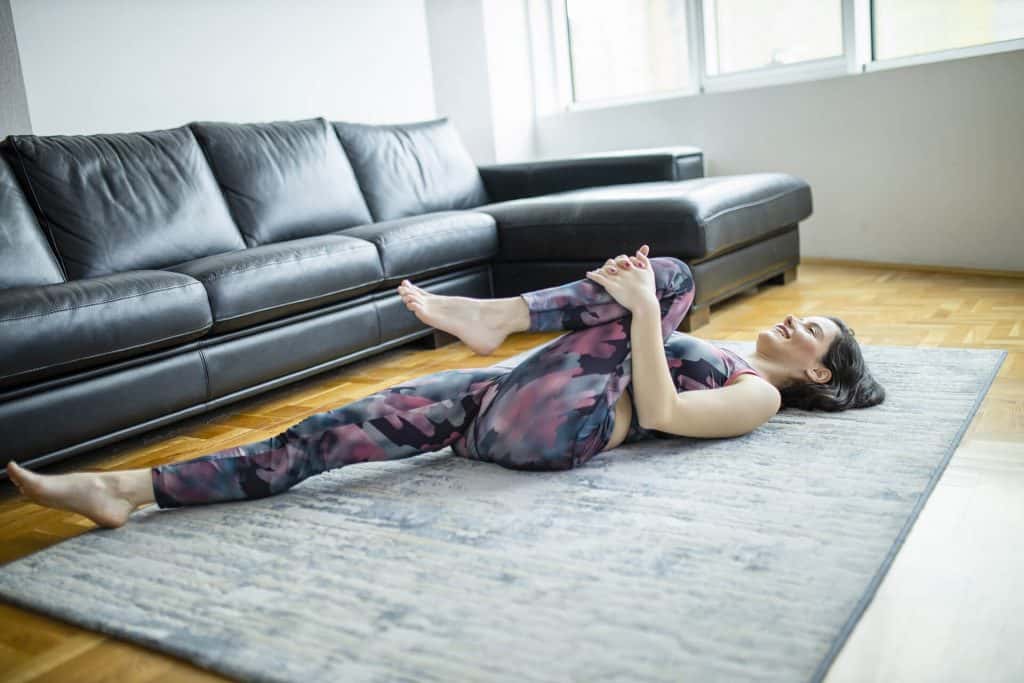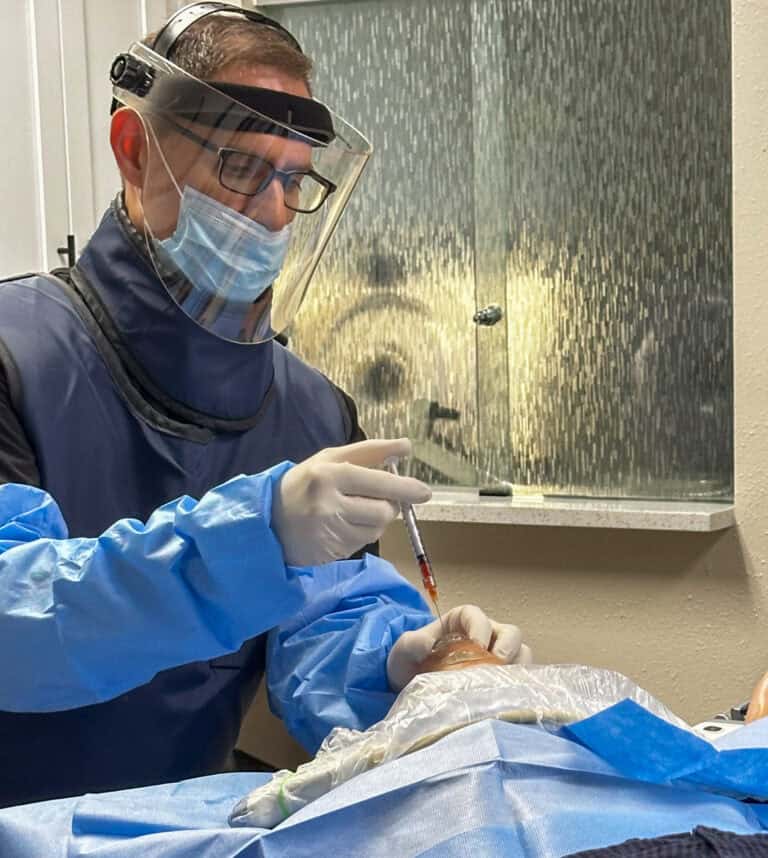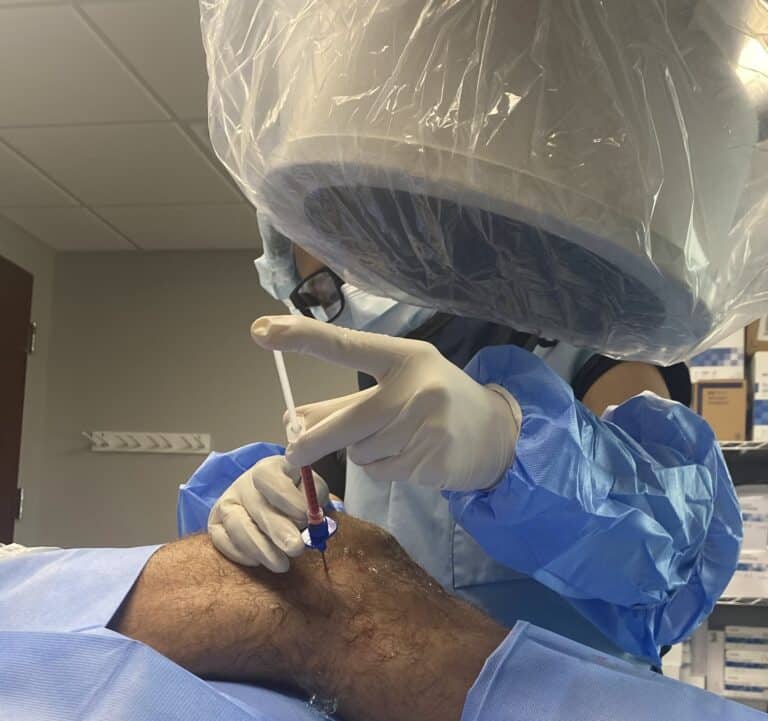The hip joint is the largest joint in the body. It is a ball and socket joint designed to have a large range of motion, and is therefore supposed to be one of the most mobile joints in the body. Hip pain is often associated with a loss in this range of motion. The loss of range of motion could be from any one or combination of the following hip pain relief exercises:
- hip joint restriction from bony change/osteoarthritis
- hip joint restriction from tightness and stiffness in the soft tissue capsule of the joint
- hip joint restriction from tight and short muscles
- hip joint weakness from muscle weakness
- hip pain from Lumbopelvic Hip complex and lower extremity muscle imbalance
- hip pain from biomechanics, or movement, issues
In an epidemiological study in the Journal of Rheumatology, there was a cross-sectional survey of 5500 adults over the age of 65 in Oxfordshire, England. The study evaluated the prevalence of hip pain with and without knee pain, and also investigated the prevalence of hip or knee pain being on one side or both sides. “Less than half (48%) of the symptomatic respondents had unilateral problems affecting one hip or knee joint only.” These findings suggest that it is more likely for those affected with hip pain to have more than one joint in the lower extremity involved, most likely due to biomechanical movement issues.
In a weight-bearing leg, there are multiple joints involved in loaded motions, such as walking. The joints involved are the ankle, knee, and hip. These joints are all dependent on each other, since they are connected by muscles, tendons, and ligaments. If one piece of this chain has tightness or weakness, there will be a compensatory chain reaction up or down the leg. For example, if the hip is tight, it will cause excessive motion in the upper leg bone, or the femur, which could cause excessive shear force at the knee. Conversely, if someone has poor foot control in walking, that can cause the leg to rotate, and impact proper hip mechanics. These biomechanical examples explain why the epidemiological study referenced above makes sense, and this truth is what guides the best therapies to help manage and prevent hip pain.
To manage and prevent hip pain, it is important to address local and global strength. This means there should be both exercises for the the hip locally, and exercises for the lower extremity and core globally. In a previous blog, muscle imbalances of the lower extremity affecting the knee were referenced, and the same imbalances affect the hip.
In order to correct the knee problems, it is important to understand which muscles of the entire lower extremity movement chain are tight and weak, respectively. Then, measures can be taken to correct those imbalances.
In the hip and pelvis, we find the following areas are often tight:
- rectus femoris (the largest quadricep muscle)
- hip capsule
- deep hip rotator
- erector spinae back muscles
In the hip and pelvis, we find the following are often weak:
- buttock or gluteal muscles
- hip abductor muscles
- hamstring muscles
- small quadricep muscles
- core muscles
In the foot and ankle, similarly, there are groups of tight versus weak muscles causing misuse of the knee.
The following foot and ankle structures are tight:
- great toe flexors
- calf muscles (called gastrocnemius and soleus)
- plantar fascia
The following muscles are weak:
- foot intrinsics
- posterior tibial muscle
- both of which are major players in arch support
For each of these imbalances, there are targeted exercises to work on the tightness and weakness in order to support the knee joint.
The following exercises provide a conservative, do-it-yourself regimen to help improve your hip pain before seeking invasive medical procedures or surgery. The following exercises could be performed in 15-20 minutes at home with minimal equipment (you may use a tennis ball, baseball, or lacrosse ball if you have one). If the regimen is performed consistently four times a week for six weeks, and no improvement is noticed, then it would be advisable to pursue an evaluation with an orthopedic specialist. As always, this post is not intended to be a substitute for professional medical advice, diagnosis, or treatment. Always seek the advice of your physician or another qualified health provider with any questions you may have regarding a medical condition. The exercises provided below are referenced from a home exercise software, Physiotec3, used in many physiotherapist practices, including that of Dr. Perone, the author of this article.
Flexibility Exercises to Manage and Prevent Hip Pain
Hip Flexor Stretch
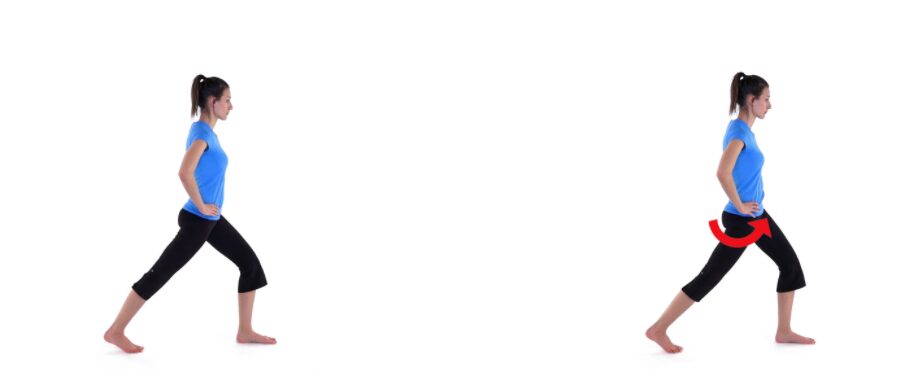
- Stand with your feet staggered and the back knee slightly bent.
- Tilt your pelvis backward and slowly bring your weight forward onto your front leg until a stretch is felt in front of the hip.
- Keep the back in a neutral position for the stretch.
- Hold onto the wall or a chair for balance
- Maintain the position for 60 seconds.
- Repeat twice on each side.
Seated Figure 4 Stretch
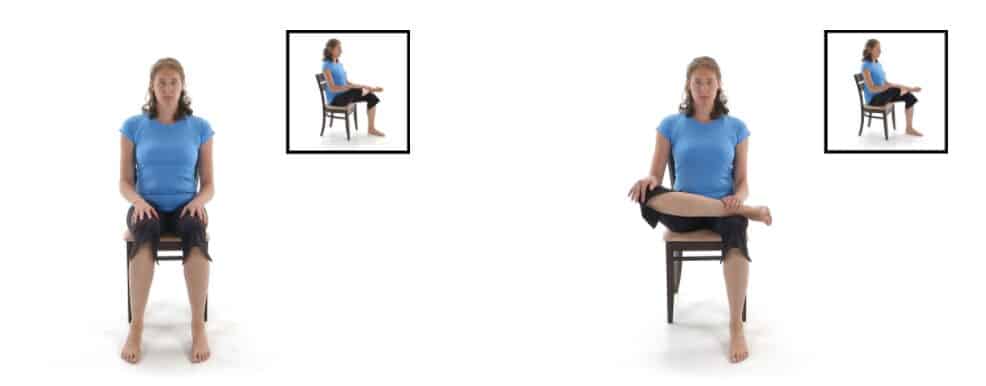
- Sit on a chair having one foot over the opposite knee in a figure 4 position.
- Push on your knee to open the leg and straighten your back while you move your upper body forward until you feel a comfortable stretch in your buttock.
- Hold the stretch for 60 seconds.
- Repeat twice on each side.
Knee to Chest Stretch

- Lie on your back and bring one knee up to your chest.
- Hold this position and feel a stretch in your lower back and hip.
- You may pull the leg towards midline of your body to increase the stretch.
- Hold for 60 seconds.
- Repeat twice on each side.
Great Toe Stretch
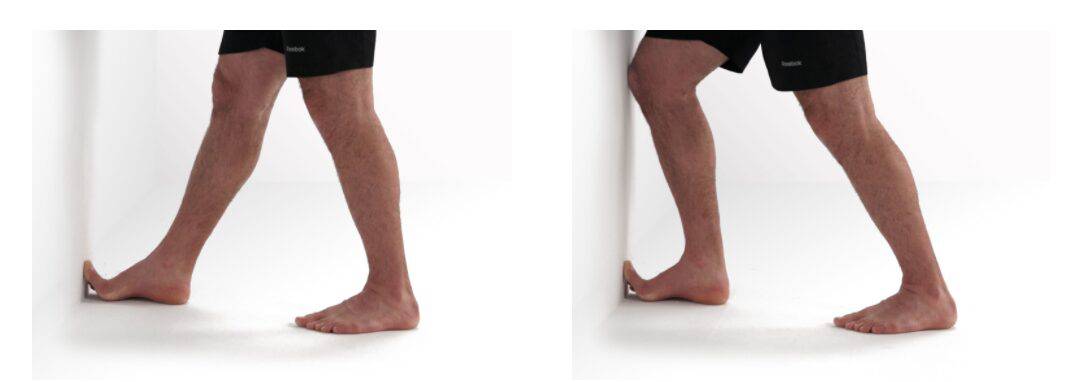
- Stand in front of a wall.
- Extend your toes against the wall and try to bring your knee towards the wall until you feel a gentle stretch under the foot.
- Maintain the position for 60 seconds.
- Repeat twice on each side.
Strength Exercises to Manage and Prevent Hip Pain
Strengthening of the hip often includes a focus on strengthening a stabilizing buttock muscle, called the gluteus medius. This stabilizing muscle has been studied in terms of which exercises targets it the best, and causes it to have the strongest isolated contraction. One research study in the International Journal of Sports Physical Therapy2 evaluated the contraction strength of the gluteus medius in different rehabilitation exercises: “By knowing the [percent maximal voluntary muscle contraction] of the gluteal musculature that occurs during various exercises, potential for strengthening of the gluteal muscles can be inferred. Additionally, exercises may be rank ordered to appropriately challenge the gluteal musculature during rehabilitation.” Two of those exercises, a side plank with leg lift, and the clamshell are represented in the exercises below and are from the top exercises with high percentages of maximal voluntary muscle contraction.
Hip Flexor Slide

- Lie on your back with your knees bent and your back in a neutral position (halfway between flat back and arched back).
- Engage your core by recruiting your pelvic floor (like a kegel) and transverse abdominis (your core).
- Maintain a steady abdominal breathing while you slide one foot out until your leg is straight.
- Return slowly to the initial position and repeat with the other leg.
- Your back must stay in neutral at all times.
- Perform 2 sets of 10 repetitions.
Wall Plank
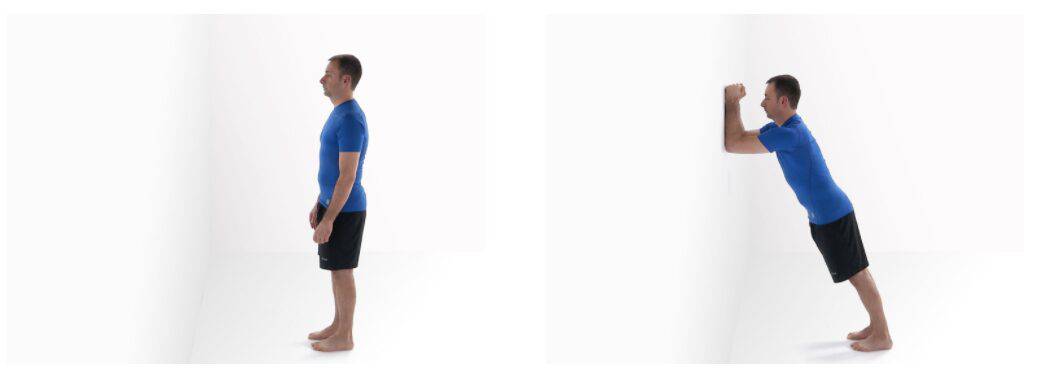
- Stand facing a wall at an appropriate distance so when your forearms will be on the wall, you’ll be in a slight angle to work your abdominals.
- Put your forearms on the wall at about shoulders height and hold the position with your body in a straight line.
- The further you are from the wall, the more difficult the exercise will be.
- Hold this position for 60 seconds.
- Perform twice.
Clamshell
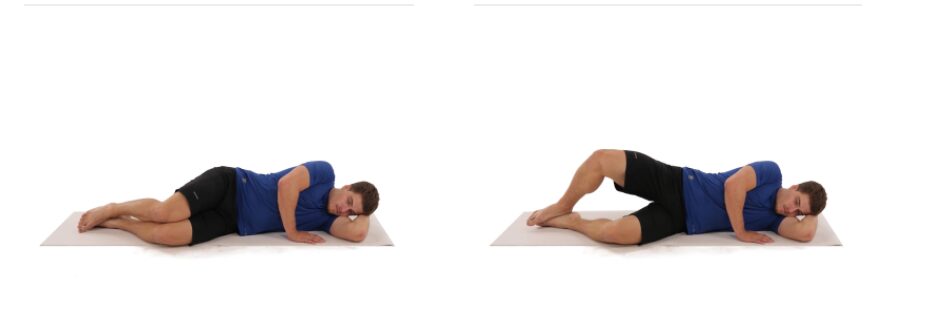
- Lie on your side with both legs slightly bent. Lift your top leg (injured leg), keeping your pelvis stable, your leg slightly bent and your heels together.
- Rotate your hip so that your foot and your kneecap are pointing upward during the movement.
- Return to the initial position and repeat.
- Perform 2 sets of 10 repetitions.
Side Plank with Hip Abduction

- Lie on your side, bend your knees to 90 degrees and place your legs in line with your body.
- Place your elbow on the floor right underneath the shoulder.
- Lift the pelvis from the floor and extend the top leg.
- Lift your leg as high as possible.
- Hold the side plank and lift and lower the top leg for repetitions
- Perform 2 sets of 10 repetitions on each side.
If performing these exercises for six weeks or more doesn’t yield an improvement in your symptoms, seek the advice of an orthopedic medical professional. The physicians at Regenexx Tampa Bay and Regenexx at Gold Coast Orthopedics are experts in evaluating the causes of and best course of action for orthopedic pain conditions. Each board-certified physician spends an hour one-on-one with their patient to ensure they get quality care.
- https://pubmed.ncbi.nlm.nih.gov/14762225/
- https://www.ncbi.nlm.nih.gov/pmc/articles/PMC3201064/
- Rehab instructions and images from Physiotec.ca
